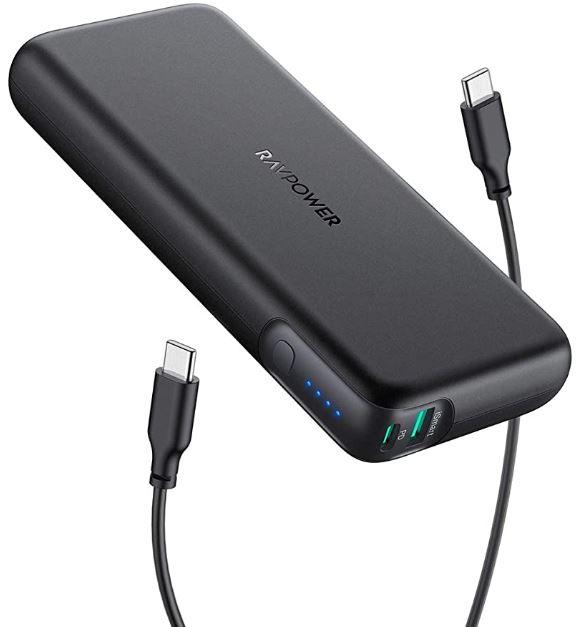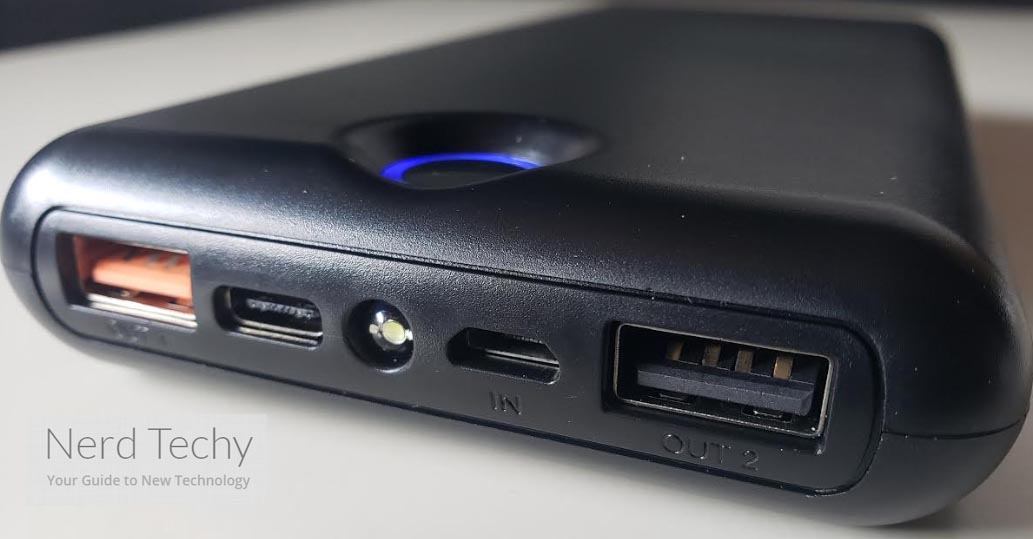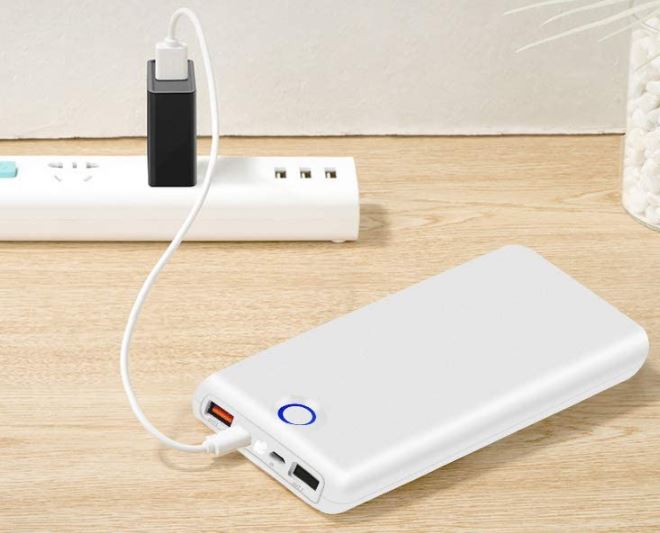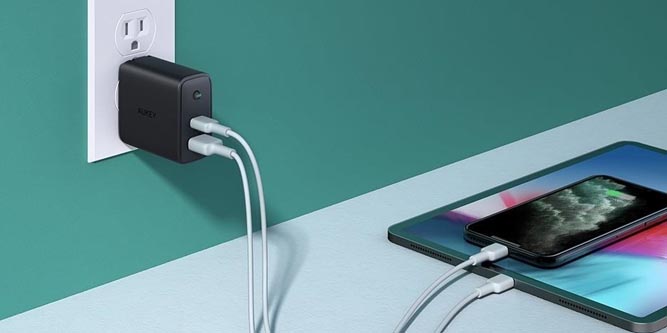If you’re shopping for a new charger, you probably see a lot of advertising about PD 3.0 and QC 3.0. These technologies have been integrated into a number of products, including various portable chargers. At first glance, they might look like the same thing. After all, both technologies are designed to charge your battery quickly. It’s just two versions of the same product, right?
Well, yes… and no. In a broad sense, you’d be correct. Both PD 3.0 and QC 3.0 will charge your battery faster than traditional USB. At the same time, there are important differences between the two. Depending on your phone, one or the other can be a significantly better choice. In fact, many phones support PD 3.0 but not QC 3.0, or vice-versa. So, what’s the difference? Let’s begin by talking about the basics of both technologies. Once we’ve done that, we’ll be well-equipped to discuss which one is better for your purposes.

PD 3.0 Basics
PD 3.0 is a fast charging technology that was developed by the USB Implementers Forum. Because it’s an official part of USB technology, it can be supported by any manufacturer. No manufacturer has to pay extra licensing fees to incorporate PD 3.0 technology into their product. All they need to do is built the circuitry and the battery to the PD 3.0 specifications.
PD is short for “power delivery”. The technology is capable of delivering up to 100 watts of power, far more than any smartphone requires. However, this high wattage has some significant advantages. For instance, it can be used to power laptops. Apple’s new MacBooks all use it, and can even be used while they’re charging. This means you’re getting much better performance than you’d expect from a standard USB cable.
In addition to 100 watt power, there are four other wattage levels: 7.5, 15, 27, and 45 watts are all supported. Within each wattage level, there’s also support for various voltages. Just to use one example, in the 27-watt range, you can charge at 5, 9, or 15 volts. This makes the PD standard exceptionally versatile. Manufacturers can build a wide variety of devices, and still get top-tier performance.
QC 3.0 Basics
QC 3.0 is similar to PD 3.0 in that it offers better charging performance than standard USB. Also like PD 3.0, both the charger and the device must be compatible with QC 3.0 for it to work. If your phone supports QC 3.0 but your charger doesn’t, you won’t gain any benefit. Similarly, if you use an older phone with a QC 3.0 charger, you’ll only charge at standard USB rates.

QC is short for “quick charge”, and it’s a proprietary technology developed by Qualcomm. The reason this is significant is that it requires a license for use. If a manufacturer isn’t willing to pay Qualcomm’s licensing fee, they won’t be able to integrate QC 3.0 technology. As a result, many devices that support PD charging don’t support QC charging.
On the other hand, QC 3.0 was designed with efficiency in mind as well as speed. This is part of Qualcomm’s effort to build the world’s greenest technology. Earlier versions of Quick Charge – 1.0 and 2.0 – were already quite efficient. But QC 3.0 is 40 percent faster, while only drawing a fraction more power. This is due to Intelligent Negotiation for Optimum Voltage (INOV) technology which – you guessed it – is also proprietary.
INOV works by intelligently detecting the exact amount of voltage required by your device. This is a significant improvement from QC 2.0, which offered four different modes. By detecting the precise voltage your device needs, QC 3.0 provides two significant benefits. First off, it maximizes your charging performance. For instance, if your device requires an unusual voltage like 19 volts, the charger will deliver it. You won’t be left flat by a 12 or 18-volt charge. Secondly, the technology avoids any wastage. You won’t be feeding 20 volts of power to a 19-volt device. Not only does is avoiding waste good for the environment, it’s also good for your device. Excess energy is shed as heat, which can cause damage. By avoiding this, QC 3.0 prevents overheating.
Which is Faster?
So, which is faster, PD 3.0 or QC 3.0? In a nutshell, it depends on your device. To begin with, there’s a difference between Android and Apple products. With Android, you’re dealing with an open standard, so your mileage may vary. Most newer Android phones support PD charging, and more than half also support QC 3.0. This includes newer Samsung models. Keep in mind, though, that this will depend on your phone’s manufacturer. If you’re using a cheaper phone like an LG Stylo, you’re still limited to Micro USB charging. This won’t allow for either PD 3.0 or QC 3.0.

That said, for Android devices that support both standards, QC 3.0 is generally faster. The reason for this is INOV technology. PD charging won’t always have an exact wattage or voltage that matches your device’s needs. If it doesn’t, it will default to the next lowest power level. With QC 3.0’s INOV technology, you’ll always get the maximum voltage. Again, the exact difference will depend on your device. On some phones, the difference is not noticeable, while it can be significant on other devices.
On the other hand, Apple and Google Pixel phones are a bit different. Both of them use PD 3.0 only. As with Android devices, though, your performance will depend on your device. For example, older Apple devices like the iPhone 7 don’t support any kind of fast charging. But with the iPhone 8 and newer, you get full PD compatibility. Be aware that you won’t get any benefit whatsoever from a QC 3.0 charger. Apple phones simply aren’t compatible with the technology.
One thing we should point out is that even newer iPhones don’t ship with a PD 3.0 charger. The default charging block is just a basic USB Type-C charger. If you want to take advantage of higher speeds, you’ll need to buy a PD charging block. This is not an issue for MacBooks, since they ship with PD-capable chargers in the box.
PD 3.0 and QC 3.0 Are Not the Same as “Fast Charging”
While looking at various electronic devices, you may have seen the term “fast charging”. What does this have to do with PD 3.0 or QC 3.0? In a word, nothing. It’s simply a measurement of how fast a battery can charge. In general, a standard 1 amp charger charges at 5 watts, which is ordinary USB. Conversely, fast charging batteries can charge at 12 watts or higher.
The main advantage of fast charging is that you can charge very quickly when the battery is very low. Generally, you’ll see something along the lines of “one hour of use from 10 minutes of charging”. The reason you won’t see a rating for a full charge is that the speed drops as the battery fills. To maximize charge speed over the course of a full charge, you need PD 3.0 or QC 3.0 technology.
Final Verdict
As you can see, PD 3.0 and QC 3.0 are similar, but remain distinct. They’re fundamentally different technologies. Which one is better? It really depends on your device. In theory, QC 3.0 is best for smartphones. By providing the exact voltage required, it allows you to maximize your battery’s performance. That said, it’s proprietary. Only certain Android phones currently support the technology. Unless you’re using one of these devices, you won’t be able to take advantage of QC charging. On the other hand, most modern smartphones support PD charging. These include all Apple phones starting with the iPhone 8.
PD charging is also ideal for laptops and other devices that require higher wattages. With support for up to 100 watts, you can charge while you’re using your device. Keep in mind, though, that not all PD chargers are created equal. Many don’t support 100 watts, which means they won’t work for all laptops. Again, check both your laptop’s specs and your charger’s in order to get the best results.
At the end of the day, whether you want PD charging or QC charging depends on what you’re trying to do. Either way, though, you’re looking at far superior performance to standard USB. As our devices grow more powerful, expect to see newer versions of these technologies in the future.
Meet Ry, “TechGuru,” a 36-year-old technology enthusiast with a deep passion for tech innovations. With extensive experience, he specializes in gaming hardware and software, and has expertise in gadgets, custom PCs, and audio.
Besides writing about tech and reviewing new products, he enjoys traveling, hiking, and photography. Committed to keeping up with the latest industry trends, he aims to guide readers in making informed tech decisions.


Hi, TechGuru,
Very nice coverage of the topic. PD v. QC is very confusing for ordinary people like me. I didn’t know that quick charge depends on both the charger and the smartphone. You did a good job explaining. I sort of understand. Now, where can I get a list of phones that support PD or QC? For example, I have an Essential Phone, Pixel 3 XL, Moto Z Force, and Asus Zenpad Z10? They all support some type of quick charging. I’d like to know which is PD and which QC. Thank you. Teng, Taiwan.
Can a PD and/or QC charger be used as a simple USB charger too? Are there any connection combinations that cause actual damage or don’t work at all to provide at least a standard 5W charge rate?
Yes, the can be used as a simple USB charger as they are often-times backwards compatible with lower powered devices. You might want to check the exact specifications on the precise charger you’re trying to use, however.
Yes, they’re typically backwards compatible with slower charging devices as well.
Great article. If I have a PD capable USB hub (and charge various devices off it), and power the hub from a QC 3.0 wall charger, will the charging of my devices from the hub still be rapid, or will it drop back to normal USB charging rates? I would expect that the charging rate (to the hub, not the devices) would be the lower of the maximum rates of the QC 3.0 wall charger, and the PD capable hub. Is that correct?
Yes, you are correct. It’s almost a “bottleneck” effect where they can’t charge fast because of the slower hub (or whatever device) in the equation.
What is better for the long term life of a smart phone battery .. normal speed USB Charging at 5 Volts or using one of these faster technologies that can vary the voltages, etc?
Hello! Very informative article. Is it possible to take advantage of the high wattage of PD or QC chargers/powerbanks to charge LIPO batteries? For example like plugins my ISDT PD60 in a QC charger to power up its 60 watts to charge a set of lipo batteries in parallel?
Thank you dude, now I’ll have to check what type of charging my MiMax 3 accepts…
Why oh why don’t they just adhere to a single standard, damn hell…
Thank you. Answer for what I was looking for.
Great article.. Thanks for providing us with this explanation. It’s very clear and concise. I’m looking for a fast charging battery back for my Samsung S20, a phone which supports both technologies. This will help me decide on what to purchase.
Years ago I owned a Samsung S7 and purchased a car charger thinking that it was a fast charger based solely on user comments, only to be disappointed when it did not “fast charge” my phone. That’s when I learned about Qualcomm’s adaptive charging technology which provided “fast charging” to the S7. Since my S20 supports both technologies, I’m looking for the best bang for the buck moving forward in time.
So if both technologies are supported by a phone, it sounds like QC 3.0 is still preferred over PD because of it’s efficiency.. correct? This is assuming all I need it for is the phone and not a laptop.
So here’s a question for RV’s and vans: If I have a combination type A and type C receptacle wired to my vehicle’s 12 VDC battery system, what determines the charge rate when using the C type connection? Is there circuitry in these hard wired DC USB receptacles?
TechGuru you are the chosen one! We appreciate you taking the time to elaborate for writing about this. Opened 5 different tabs with different articles and this was my first read and it answered almost 3/4 of my head scratcher-questions. I’m a curious fella especially when it comes to the speed in which Moore’s Law is being implemented and all these newer generations of devices being released. I’m still using my 2019 pre-ordered at-time-of Samsung Galaxy S10, waiting for a device that shows significant feature upgrades (processor speed and display type) and not merely a camera upgrade (most of us are just fine with the a 12-16MP triple-lens camera system on the back and front of our devices (eyeroll lol). This is the first time I’ve held back on my annual upgrade that had me go from the S5 > to the > S7 > S8 > S9 > S10 .
Only time I most nearly changed was when the S21 came out. I didn’t do much research on it, but I happened to pass by the Galaxy Store inside of The Americana at Brand in Glendale, CA about 6-8 weeks after it was launched and I suppose the numbers weren’t nearly as strong as predicted, and with that, they started offering all sorts of crazy deals. Most nearly purchased it, until I was informed that the device had absolutely no External Storage capability. I was seriously dumbfounded, coming from Samsung.
Now there’s QC 4.0 and USB 3.2 if not higher at this point, all relative to read/write speeds and data transfer.
Excellent article. Was reading to understand which adapter to buy for my new Pixel 6. Official google adapter is not available in my country. Have ordered a PD 3.0 now. Will test and let here know about the results.
Thank you.
the charger has 3 usb port and is pd 3.0 with 65 watts and a qc 3.0 as well
does this mean i can use this for simultaneous charging on 3 phones without diminishing the speed of charging?
So my Pixel 7 Pro doesn’t support QC charging. Would that still hold for wireless charging using QC technology? Is it less precise?